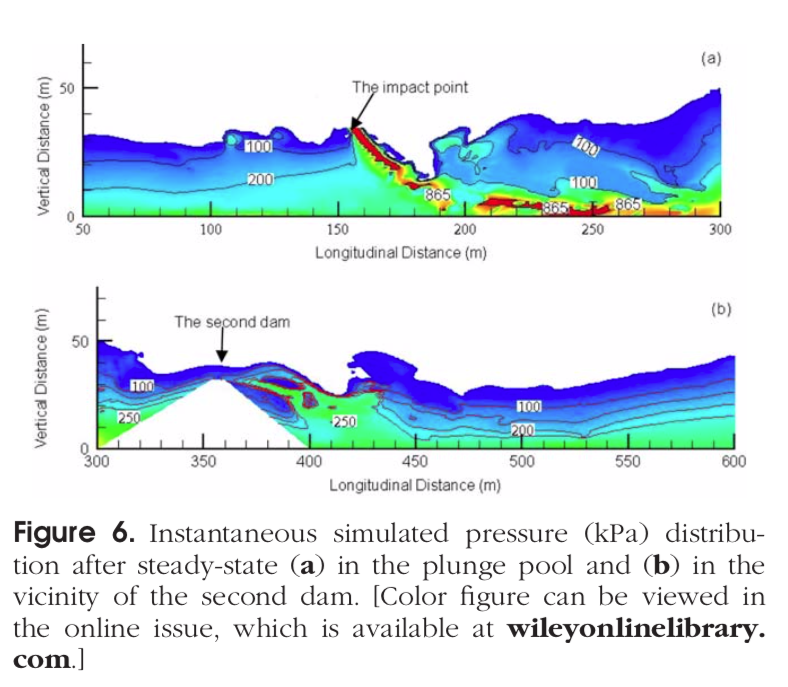Two-phase flow simulation of supersaturated total dissolved gas in the plunge pool of a high dam
ABSTRACT: Total dissolved gas (TDG) supersaturation can cause potentially fatal Gas Bubble Disease (GBD) in fish and is recognized for its severe environmental impact for high-dam operation conditions. The generation of supersaturated TDG in high-head hydropower project is substantially different from middle- or low-head projects that have been previously studied. Although the mechanics of TDG generation in a plunge pool are clearly three-dimensional (3D), there are great challenges and difficulties of the 3D simulation for high-dam projects. Toward this end, a two-dimensional (2D) model of two-phase flow in high-dam plunge pool is developed with established computational fluid dynamics (CFD) software. New simulation modules are developed to account for a normal distribution of bubble sizes, which allows the TDG mass transfer from bubbles and across the free surface to include bubble size nonlinearities that were previously neglected. The model is calibrated based on observations from a high-dam hydropower project with a ski-jump spillway and deep plunge pool. Characteristics of simulated hydrodynamics, air-bubble distribution, and TDG distribution downstream of the high dam were analyzed. Results showed that the model achieved satisfactory calibrated simulation of dissolved gas behavior and the assumption of a bubble normal distribution could properly reflect the bubble transfer process. Residence time in the plunge pool appeared to be a key factor determining maximum modeled TDG supersaturation levels.


